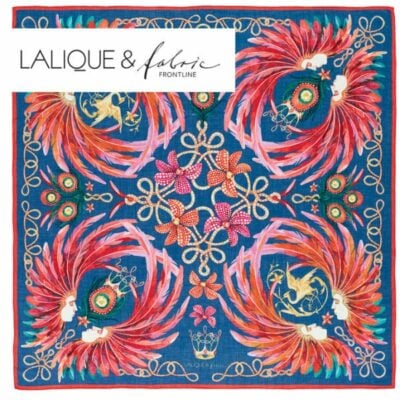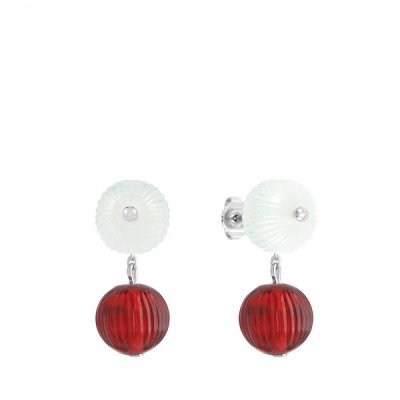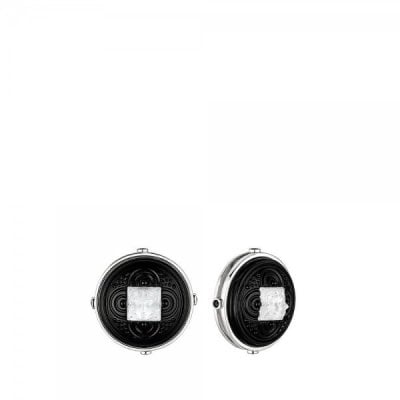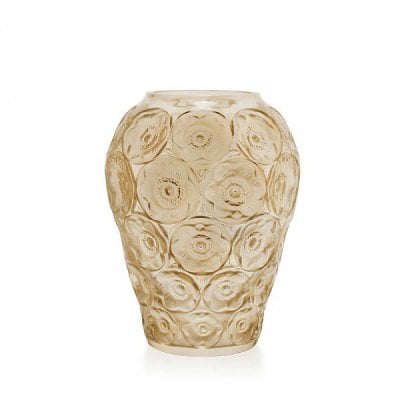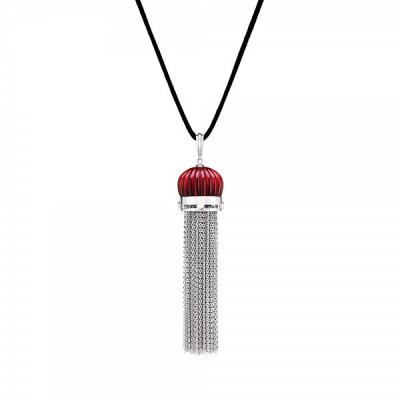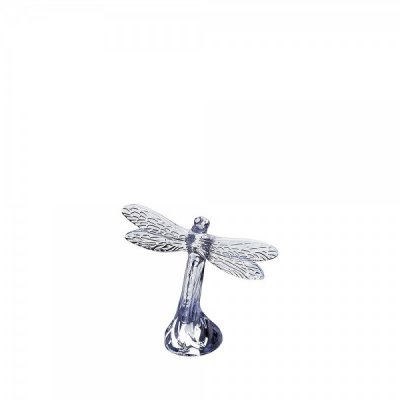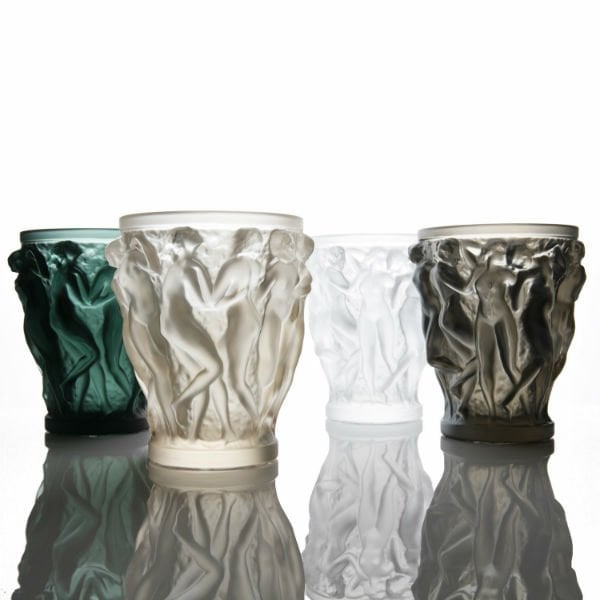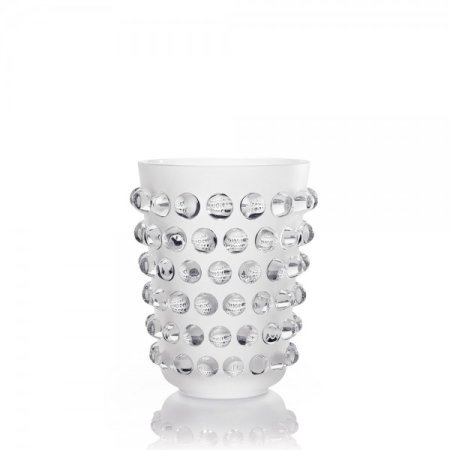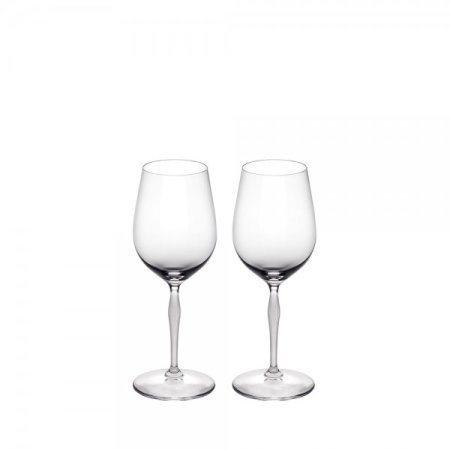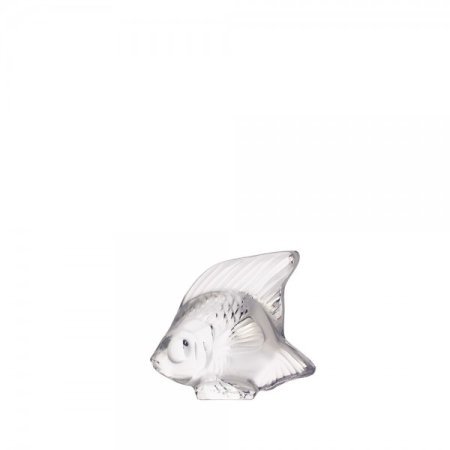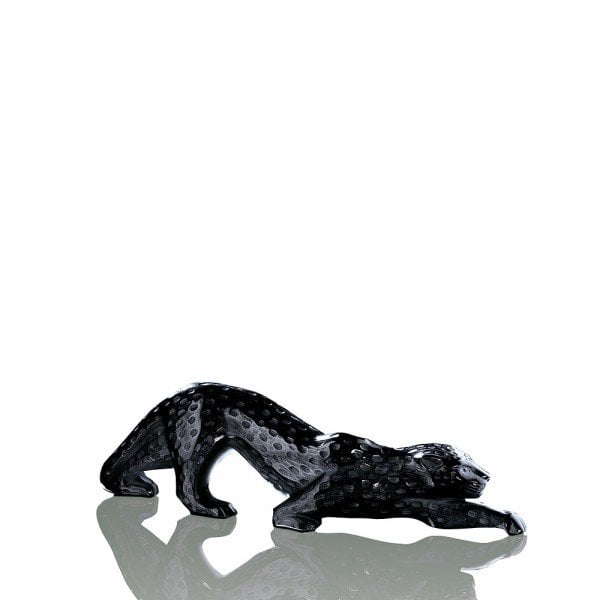LALIQUE - CRYSTAL
Founded over a century ago, in 1888, Lalique has endured as the ultimate symbol of French luxury. René Lalique, designer of one-of-a-kind Art Nouveau Jewellery, cultivated the image of Beauty, the Kiss and its invitation to Love. Today, Lalique remains one of the purest crystal in the world.
Showing 505–516 of 721 results
-
Original price was: 590,00 €.525,10 €Current price is: 525,10 €. TTC Etre informé du retour
-
6xxcm
-
32xx21cm
-
32xx22cm
-
32xx22cm
LALIQUE CRYSTAL FRANCE – CRYSTAL LALIQUE :
LALIQUE CRYSTAL FRANCE – CRYSTAL LALIQUE, Founded over a century ago, in 1888, Lalique has endured as the ultimate symbol of French luxury. René Lalique, designer of one-of-a-kind Art Nouveau Jewellery, cultivated the image of Beauty, the Kiss and its invitation to Love. Jewels cut in the purity of crystal, a medium for tenderness. The founder of modern jewellery, René LALIQUE, was considered the leader of the Art Nouveau movement. Although he drew a great deal of his inspiration from the plant world, he also dared to display the female body in all its beauty and sensuality.
♦ LALIQUE FRANCE :
Lalique renews with an exceptional know-how dear to Rene LALIQUE : The lost wax technique : Revolutionary artist, both admired and considered eccentric, René Lalique has a huge following, from the European courts to artistic and industrial milieus around the world. This prolific genius, dubbed “the Rodin of transparencies” by Maurice Rostand, has infused his Maison with such poetic force that 150 years later, the charm still operates and his art has become timeless.
The love for sculpture is present in René Lalique’s work and life. He was friends with Rodin and married Augustine-Alice Ledru, whose father and brother were both sculptors. In crystal, the lost wax technique is directly inspired from a thousand year-old procedure used to melt bronze sculptures. Lalique’s originality stems from using it first in jewelry, replacing stones by small glass motifs. He later used this technique to create larger pieces. Finally, the lost wax fabrication process for large pieces is fairly complex: after having modelled a piece in wax it is covered with plaster, it is then sent to the oven so as to bake the clay while the wax melts.
♦ RENÉ LALIQUE, THE MAGIC OF A NAME :
A past, a history tied-in with the history of decorative arts and the 20th century.
Attentive to living beings and nature, and endowed with exceptional gifts, René Lalique started his career in jewellery. This artist jeweller and poet was the most famous name of the Belle époque. He became the absolute master of the Art nouveau jewel, in which he blended symbolism and naturalism, inspired by Japanese artists, and remodelled long-abandoned techniques and materials such as horn, enamel, ivory and glass to please contemporary tastes. Lalique was the inventor of modern jewellery. From the beginning of the 20th century, he became famous, a purveyor to the courts of Europe, museums and collectors.
In 1907, René Lalique acquired a passion for glass, which had become an element of his works. The artist craftsman became a manufacturer, reinventing the perfume bottle and developing opalescent glass. He decorated the Orient Express on the Rond Point des Champs Elysées, and produced a host of objects, from the more mundane to the most daring, controlling and refining transparency and reflection, with an international success that continued to his death in 1945.
René Lalique remains the undisputed master of a style and of a material : glass.
His successors have definitively imposed crystal, while remaining faithful to the spirit of René Lalique. Today, a crystal design shop carries on his skill and knowledge and his style.
♦ LALIQUE AND LOST WAX PROCESS :
Lalique work with this process developed more than in 3000 years ago in the Bronze Age by the Chinese. This technique is used in the production of bronze, glass and crystal for producing a unique mould and piece.
First, the design studio produces a plaster and/or plastilina model to give shape to the drawing. This model is then moulded using silicone rubber or elastomer. Then it is coated in plaster. Wax is poured into the mould and removed from the mould once hardened. The following stage consists of pouring refractory plaster over this wax piece. When placed in a furnace, the wax will melt under the effect of the heat and will create a hollow refractory plaster mould.
Crystal is then poured into the unique refractory plaster mould. This stage is delicate, as the quantity of crystal must be adjusted to the volume of the piece. This technique enables the production of complex shapes that remain true to the detail and size of the design whilst producing pieces of reduced thickness.
This process therefore gives free reign to creative spirit. It also reduces any reworking at the cold end stage (such as cutting off the excess glass from injection moulded pieces).
♦ LALIQUE POTS :
Lalique is one of the few crystal makers to make and use its own pots. This large refractory clay pot is placed inside a pot furnace and holds the molten crystal, from when it is gathered to when placed inside a mould. A colour cycle from very light to very dark must be followed in order to ensure optimum use of the pot that can last from 3 weeks to 4 months.
The quality of the crystal depends upon the quality of the pots, which is why Lalique makes its own pots in its pottery factory.
The pots are produced using refractory clay made from natural earth and up to 30% chamotte (calcined, ground and screened clay). It takes one man 24 days to make 3 pots. These pots have a thickness of between 6 to 12 cm and it takes a minimum of 6 months for them to dry. They are placed successively in three drying chambers : from the room temperature of the manufacturing chamber, to the intermediate chamber and finally to the chamber near the furnaces where the temperature is around 60°C. After drying, the pots are fired for 7 to 9 days at 1200°C for a minimum of 8 hours. Lids are placed on the pots, which are left inside the furnace in order to reach a temperature of 1420°C after 20 hours of firing. Once this temperature is reached, the lids are removed.
The potters then build up the arch of clay around the mouth of the pot in order to completely caulk the joint between the furnace and the pot. Little by little, the temperature stabilises.
The partial vitrification stage is essential in order to make the inside of the pot impermeable via ceramicisation. A final stage consists of rinsing the inside of the pot with cullet in order to detach all impurities that may attach themselves to the molten crystal.
♦ HOT END WORKING :
First step on manufacturing, work involving transforming molten crystal, gathered at 1130°C to 1200°C, taking place in the hall, or the Hot End workshop. This stage is extremely delicate and only one of three pieces is accepted and sent for Cold End working. The other pieces that are refused are put in the “scrap”.

♦ COLD END WORKING :
Second step of manufacturing, the cold end working. The aim is to cutting work on the decoration and surface to produce a satin polished finish on the piece. The added value of Lalique pieces lies essentially in this finishing work (see masking, enamelling, polishing, satin finish work).
That is why the factory has 3 Cold End workers for every 1 Hot End Worker. Once through Hot End working, the first cold end stage consists of removing all the surface defects and mould seams. Then the worker re-sculpts the piece so that the decoration exactly matches that of the design drawings. Finally the subtle satin re-polishing effects obtained by the contrast between shiny and matte enhance the piece.
Cold End Work involves extremely delicate procedures that can take up to five days for the most fragile pieces.
♦ LALIQUE MUSEUM – WINGEN-SUR-MODER :
Opened in 2011, the Alsatian Museum is a real success. Located in the historic heart of the Lalique House, it’s in Wigen-Sur-Moder (North of Alsace) that René Lalique established his glassmaker in 1921.
The Lalique Museum unveils more than 600 exceptional works including jewels, sculptures, vases, bottles, and also drawings from the archives of the René Lalique period.
A real return to the Belle Epoque past. The visitor thus plunges into the 1900 World’s Fair to see René Lalique’s booth or discover the Industrial and Decorative Arts Exhibition of 1925.
A clever blend of traditional know-how with today’s tools. Thus, it’s possible to trace the manufacture of the famous Bacchae vase through a touch-sensitive table. In a subdued atmosphere, the museum not only pays homage to this creative genius, but also to his successors, as well as to the women and men who continue to perpetuate the glass know-how today.
Lalique shop is present at the entrance of the Museum where you will discover the current collections. During your visit to the Lalique Museum, the Villa René Lalique restaurant is located a few kilometers away. You can also enjoy the Hochberg Castle, in a chic brewery spirit.
Key figures: 52 576 visitors to the Lalique Museum in 2016.
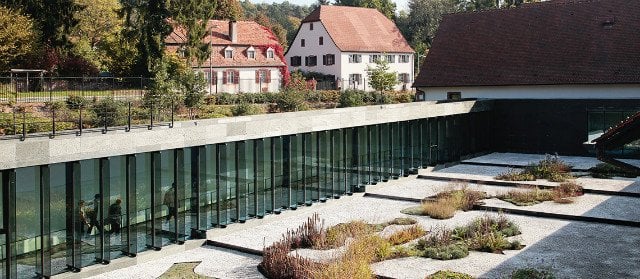
♦ THE RENÉ LALIQUE VILLA, HOTEL & RESTAURANT :
Opened in September 2015, the René Lalique villa has established itself in the world of luxury and gastronomy. The lively showroom of Maison Lalique welcomes tourists from all over the world.
Showcasing the art of living and know-how according to Lalique, the Villa built by René Lalique in 1920, has a new destiny.
Completely renovated, the villa now houses an ultra-refined hotel and a gourmet restaurant, 2 Michelin stars, proudly held by the famous chef Jean-Georges Klein, known for being one of the most discreet chefs in France.
A superb museum that knows more than 50,000 visitors a year, with a continuous renewal of exhibitions, Lalique hotel and gourmet restaurant, and recently, the castle Hockeberg castle, which prides itself as a chic Lalique bistro. A consensus of elements located in Wiggen on Moder, to the delight of tourists.

♦ SILVIO DENZ, CHAIRMAN AND CEO LALIQUE :
This year we are celebrating 130 years of Lalique as proud heirs to a unique artistic tradition that still inspires our creative work and current projects. Collaborations with artists such as Damien Hirst are audacious endeavours, but René Lalique, who was himself a visionary and trendsetter, would no doubt have approved.
Today, Lalique epitomizes luxury lifestyle, the “art of living”, in all its forms: decorative objects, glasses, decanters, jewellery, fragrances, interior design, hospitality and gastronomy. Our creations are not simply magni cent objects to be put on display, but truly useful and functional as well. Since opening the hotel-restaurants at Villa René Lalique in 2015 and Château Hochberg in 2016, both at Wingen-sur- Moder in Alsace, we have widened the scope of our activities. To mark the 400th anniversary of Château Lafaurie-Peyraguey (Premier Grand Cru Classé de Sauternes in 1855), a new hotel and gourmet restaurant, designed entirely by Lalique, is set to open its doors at the château in Sauternes south of Bordeaux in spring 2018.
For René Lalique, romanticism, adventure and style were always intimately bound up with luxury travel. He was fascinated by the new modes of transport emerging in his day and took a keen interest in the “art of living” on board ocean liners and trains. The fabulous décor of the restaurant on the Orient Express and the main dining room of the ocean liner Normandie are ample proof of this. The Far East was one of his great sources of inspiration, but it was also a part of the world he especially favoured with his work. In China, he decorated the Peace Hotel in Shanghai, and in Japan, in 1931-32, he made the Ananas panels and the doors for Prince Asaka’s palace, since transformed into the Tokyo Metropolitan Teien Art Museum. Later, the Pigeons fountain, also known as the Bombay Fountain, created in 1938, was installed by Maharajah Sawai Man Singh at Rambagh Palace in Jaipur, India. We therefore take particular pleasure in our new collaborative ventures with Singapore Airlines, the racing and sports car manufacturer McLaren, the legendary Venice Simplon-Orient-Express, the jeweller Mikimoto in Tokyo, and Far Glory in Taïwan, to name but a few.
Our reputation in Asia is burgeoning, and the name of Lalique is not solely associated with past glories. In fact, 2017 saw recent creations reach very high prices at auction in Hong Kong. Jewellery designed by René Lalique is selling today at exceptional prices: on 13 November 2017, a new record was set at Christie’s in Geneva by a necklace created in 1899-1901, which went for 978 480 US dollars.
I am fortunate in being able to count on the outstanding team at the factory in Wingen-sur-Moder. Several of the workers learned their craft from their fathers; some already represent the fth gener- ation of their families to work at Lalique. Given that it takes more than a dozen years to qualify as a master glassmaker, we are committed to training several youngsters every year to ensure that these unique skills, which are recognized as part of French cultural heritage, are not lost. At 130 years of age, Lalique is more dynamic and creative than ever.
♦ LALIQUE FRANCE SIGNATURE :
How to recognize the Lalique crystal? Each piece exiting the Lalique factory is stamped “Lalique France”. Direct engraving is done with a diamond tip. The diamond tip is like a metal stylus with a diamond chip attached at the end, and its implementation resembles drypoint etching technique on metal. This is how a freehand Lalique signature is affixed.
Before 1914, the pieces were signed indifferently “Lalique”, “R. Lalique” when the object was reissued after 1919.
From 1919, the initial “R” begins to be inscribed on the new models. The productions between 1919 and 1945 are signed “R. Lalique”.
However, for a brief period until 1927, the R. Lalique signature could be followed by a reference number. The signature VDA (Alsace Glassware) is used between 1921 and 1923. After 1945, “R” disappears and the signature becomes “Lalique France”.
♦ ICONIC LALIQUE ITEMS :
BACCHANTES VASE
In 1927, René Lalique’s boundless imagination and creative genius lead to the creation of the Bacchantes vase.
The iconic design features the young priestesses of Bacchus with their voluptuous beauty and curves. A work of unparallel beauty, the splendor and sensuality of the vase continue to leave admirers spellbound.
MOSSI VASE
The kaleidoscopic effect of the Mossi Vase is both a stroke of creative genius and a feat of technical mastery. René Lalique designed this flagship piece in 1933. His original choice of material was plain glass, which the company has transformed into the vibrant intensity of crystal. A genuine interior design accessory of modernity, the Mossi plays on the contrast between the brilliance of its cabochons and the frosting of its base.
100 POINTS GLASSES :
“Beautiful yet functional” is how internationally acclaimed wine critic James Suckling describes the 100 POINTS collection.
With a name referring to the wine scoring system, 100 POINTS is a hand-made collection that embraces a modern design and precise utility while exemplifying the established style of Lalique: crystal fashioned by the best glass-masters, “U” shaped bowl and distinctive frosted rib stem to obtain the characteristic contrast of clear and satin-finish.
LALIQUE FISH
Designed by René Lalique, 1913, the fish become an iconic piece in the Lalique collection. Available in lots of colors, handcrafted in France, piece signed Lalique France.
Nimble and sensual, she approaches stealthily, preparing for her attack. Her slim silhouette is enhanced by powerful muscles covered with crystal fur sculpted by thousands of luminous spots. Designed by Marie-Claude Lalique, the Zeila Panther embodies the feline strength and grace.
MUGUET PENDANT :
The Muguet pendant is composed of 3 clear crystals lily-of-the-valley mounted on silver, on a grey Lalique cord.


